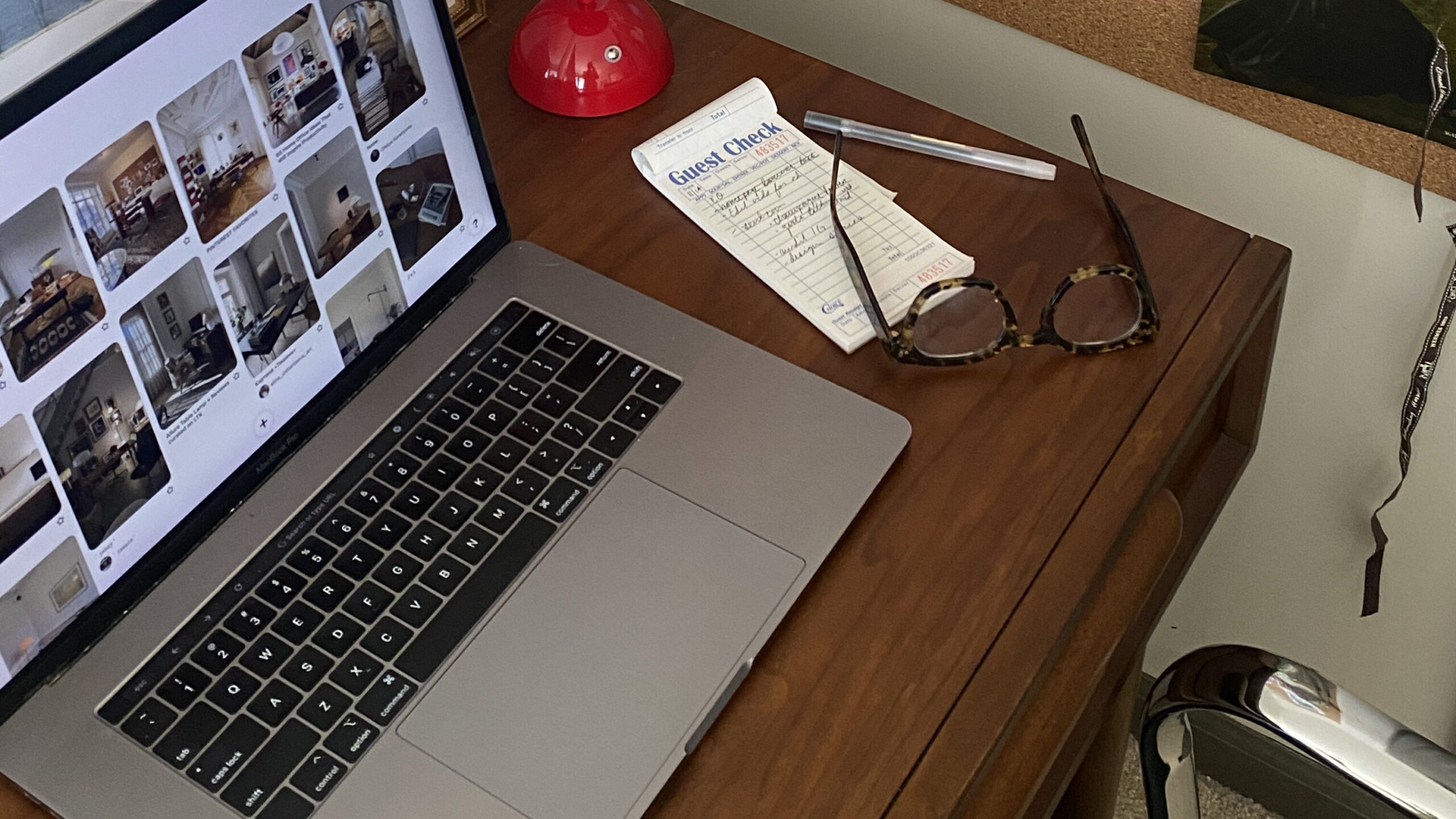I have a love for words and a knack for SEO – and as a mama, I know just how challenging it can be to run a business while raising a family. This blog is just one of the many resources you’ll find here that’ll help you boost your online visibility without sacrificing your sanity.
Thanks for being here (and I hope you’ll stick around).
Mckayla
categories
blogging
seo
Business
stop getting ghosted by gogle
download now
explore
case studies
to the shop
work with us
follow us on instagram
share
Did you know that SEO goes beyond on-page optimization? Yep. Search engine optimization not only involves what’s on YOUR website but also how other websites engage with your content — namely, through backlinking.
Backlinking is the action of another website or your own linking to another website on a page or through your content. For example, if I write about SEO and link to it in another blog post or someone else links to it in their blog post — that’s a backlink.
How do I add backlinks to my website? The best method — although the longest — is to write helpful and SEO content for your audience. You’ll start getting backlinks from other sites that believe your content is useful to their audience as well. The only downside is that you’ll be waiting for Google to index and rank your webpage.
Other methods of adding better backlinks to your website can include guest posting for other sites, suggesting backlink placements, participating in round-ups or interviews, and even writing for third-party websites like Quora or Medium.
Of course, there are also methods of gaining spammy backlinks that can bring down your website’s domain authority, negate your SEO efforts, and essentially tell Google your website shouldn’t be trusted. Typically, this is from buying backlink placements on websites — for example, when you find an offer that says you can buy 20 high-quality backlinks for only $50. Don’t do it; it’s a scam.
What is a Backlink? Why Are Backlinks Important for SEO?

Backlinks are created when a website links to another with an anchor text. A backlink example would be when any article or webpage links to another resource — or website. When you visit any webpage that appears on the first page of Google in a search, you’ll typically be able to find backlinks.
These pages not only utilize a backlink strategy for their on-page SEO to rank higher, but they have also built backlinks from outside sources, which is why they’re able to rank so much higher in search.
Why are backlinks important for SEO? High-quality do-follow backlinks can improve your rankings, boost your credibility, help Google find new pages, and send referral traffic to your website – all actions that show Google that your content is relevant to your query or targeted keywords.
In general, backlinks are considered a small piece of the SEO puzzle. It’s one of the steps that come after website optimization and content optimization, mainly because you have to have an SEO-friendly website to give other sites to link to.
Realistically thinking, if you don’t have content or a webpage that provides the answers or additional information another website wants to share — you won’t get any backlinks.
You can check the number of backlinks on your website using an SEO tool like Moz or Mangools. These tools allow you to see the number of backlinks on a page, where the backlink is coming from, and even the linking text.
What is a Quality Backlink for SEO?
A quality backlink benefits your SEO, while a spammy or low-quality backlink can hurt it. That makes sense, right? But knowing what they do for your site doesn’t explain which backlinks are high-quality and which are low-quality.
High-quality backlinks are backlinks from trusted sources on Google in your niche. These websites should post content that serves an audience similar to yours and have a high-quality website. A trusted website is a website that publishes original content, follows all of Google’s rules, and keeps its website up-to-date and user-friendly.
Also, a high-quality backlink doesn’t need to come from a website with high domain authority. While backlinks from websites with high DAs can help more than ones from sites with lower DAs, both are beneficial to your website.
What is a Bad or Low-Quality Backlink?
Typically, a low-quality backlink comes from a poor backlink strategy. These backlinks are from websites that have gone against Google’s backlink policy (Google Link Spam) and have been marked as spam. These backlinks are typically acquired by:
- Buying the backlink placement
- Excessive link exchanges
- Automated programs that create links to your site
- Low-quality directory or bookmark site links
- Links embedded in widgets distributed across various sites
- Forum comments with links in the post signature
How to Create SEO Backlinks to Your Website

When trying to acquire backlinks to your website, you have two main options — free and paid. I’ll go ahead and clarify that you’re not paying for backlink placement; you’re paying for a service offered by SEO professionals who create and implement your SEO backlink strategy.
A free backlink strategy is simply a DIY version of what an SEO professional would do. You handle the outreach, the content creation, the marketing — all of it!
That’s not to say it’s impossible to acquire backlinks for free. In fact, some of the BEST backlinks are free and acquired without much effort. Here are four ways you can acquire free high-quality backlinks for your website:
#1. Guest Posting on Websites in Your Niche
Guest posting is a very efficient and quick method of establishing high-quality backlinks to your new website. It allows you to link from websites related to yours to content on your own website – building both your authority in the field and boosting your SEO.
While guest posting is the most efficient way to quickly build SEO backlinks, it’s also the most time-consuming.
The actual placement of a backlink is quick, but the time spent finding websites to guest post on and writing the content to meet their requirements can take some time. Some websites that accept guest posts require content with specific word counts and images and only cover certain topics. These word counts can be anywhere from 750 words to 3,000 words, depending on the website.
#2. Creating High-Quality SEO Content for Your Site
A longer method of acquiring backlinks, but the most natural and least time-consuming in the long run, is by creating in-demand, high-quality SEO-optimized content for your own website.
Owning and maintaining a blog where you publish search-engine-optimized content regularly can increase your chance of acquiring free, high-quality backlinks to your content.
How does it work? Essentially, when users search for your keywords – and you’re ranking for those keywords – they’re able to locate your content and then share said content with their own audience. This creates backlinks to a wide variety of websites that are related to your niche and the keywords you target, creating a high-quality SEO backlink.
For this method to work, it’s important to create a strong content strategy. You’ll want to ensure you’re pre-planning your blog posts and utilizing a keyword strategy to help boost your rankings in Google. Lastly, you’ll want to ensure that you’re following SEO-best practices to create SEO-friendly blog posts.
#3. SEO Backlinks Using HARO (Help-A-Reporter-Out) & Qwoted
Free for a limited amount of pitches (or specific pitches) per month, both HARO and Qwoted are programs you can sign up for as a business owner that allow you to connect with resources looking for quotes from a specific niche/person. When you meet those criteria, you can submit a pitch for placement and link to the article.
HARO and Qwoted are time-consuming when searching for and pitching placements, but you can also do them whenever you’re free. If you don’t have time, there’s no requirement to pitch – unlike when you’ve committed to guest posting on a website. The actual time required to “pitch” depends on the query, as some request longer responses than others.
#4. Find Broken Links and Fix Them!
This is a trial-and-error and a bit time-consuming method of building backlinks to your website. It mostly involves staying updated in your niche and being aware of your competitors. What you’ll need to do is essentially “find broken links” and then pitch the website your link to fix it!
While this can land you extremely high-quality links, it can also be the hardest way to acquire backlinks (at first). Finding broken links and ensuring that you have the content to replace them can be hard as a new business owner — which is why this method is typically preferred by businesses that already have a good library of content to pull from.
This method was dubbed “The Moving Man” method by Brian Dean.
How Do I Create a Backlink Strategy for My Website?

The best strategy for acquiring SEO backlinks is to combine the four techniques mentioned above. This will allow you to get backlinks from multiple sources, building up your website’s reputation with Google.
Still, realistically, you might not have the time to commit to doing all four. When you CAN’T do all four, I highly recommend finding one or two that you really enjoy and leaning into it. The ones that you choose to do should also align with your goals.
For example, if you’re looking for backlinks NOW, it’s probably not a good idea to rely solely on SEO for quality content.
If you’re looking to improve your off-page SEO, I highly recommend checking out The Guest Post Directory, a collection of over 350 websites looking for guest posters!
Reader Etiquette
© - Content and images in this blog are copyright this blog unless stated otherwise. Feel free to repost or share images for non-commercial purpose, but please make sure to link back to this website and its original post.
℗ - We do not store any information about your visit to our website other than for analytics and optimization for content and reading experience through the use of cookies.
c/o - Our site does at times contain paid advertisements, sponsored content, and/or affiliate links.
You might want to check these out too while you're at it
FREE Guide:
6 Simple Steps For Better SEO
INSTANTLY IMPROVE YOUR GOOGLE RANKING
Want to improve your website SEO in one afternoon? This free resource offers 6 actionable steps you can take in 15 minutes or less to instantly improve your SEO.
download now
categories
blogging
SEO
business
It's me, hi! Your SEO bestie.
get to know me
work with us
//
services
//
case studies
//
Mom of three, lover of all things blogging, and borderline obsessive coffee drinker — I also just happen to love making complicated things simple and accessible, especially when it comes to SEO. The blog is a collection of what I've learned from years of testing, trial and error, and working with amazing clients with impactful businesses (just like yours). Blogging and SEO doesn't have to be boring — and it definitely doesn't need to be difficult.



